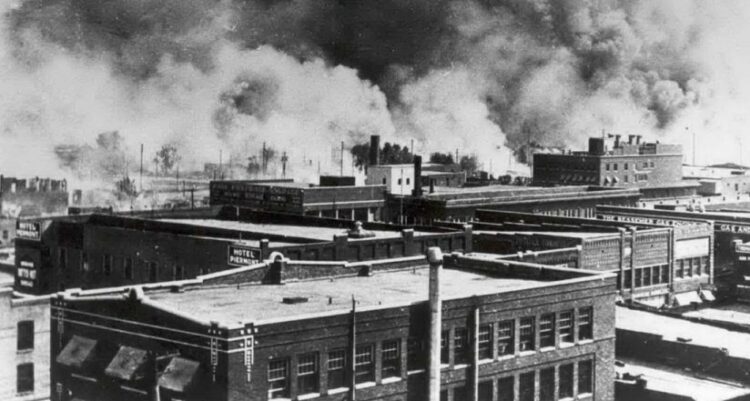Historically known as the Black Wallstreet, Greenwood District was listed in the National Register of Historic Places. The Oklahoma Historical Society and State Historic Preservation announced a press release on Friday.
The listing comes after years of failed attempts, according to Tulsa World, because of the town’s sparsity of tangible artifacts and historical buildings, many of which were destroyed in the 1921 Tulsa Race Massacre and, years later, urban renewal.
“The Greenwood Historic District’s historical significance and legacy of perseverance will be forever woven into the fabric of America’s history,” Reuben Gant, executive director of the John Hope Franklin Center for Reconciliation, said.
Gant continued, “The John Hope Franklin Center for Reconciliation appreciates the collective, collaborative efforts and commitments to this arduous fifteen-year process. We celebrate this nomination with the worth and dignity of all the families and their descendants.”
Greenwood, described as a city-in-a-city, was a Black neighborhood in Tulsa where successful Black-owned businesses and Oklahoma’s oil boom caused the town to thrive in the early 20th century. And since the Jim Crow Laws were enacted at the time, the Greenwood’s money circulated within the city because the Black community thrived on supporting Black-owned businesses.
In 1921, white Tulsans, with a nod from city officials, burned those businesses and homes in Greenwood down to the ground, killing hundreds of people. The Tulsa Massacre became one of the most tragic moments in Black history.
“Finally,” U.S. James Lankford said about Greenwood getting listed as a historical place, which he partnered with local and federal authorities to make the listing happen. “This is tremendous for the Greenwood community, great for tourism, and a blessing for Oklahoma.”
He added, “As is most things from the federal government, this has been too complicated and has taken too long, but perseverance paid off.”
The Oklahoma Historical Society Executive Director, Trait Thompson, called the listing a “milestone” and said it preserved Tulsa’s important history.
“The citizens of Greenwood rebuilt their community (after the 1921 Tulsa Race Massacre) only to see it decline again due to urban renewal and construction of an interstate highway in the 1960s,” Thompson said. “Today, Greenwood is enjoying its third renaissance, and the National Register placement will help civic, and community leaders in Tulsa continue to tell this important story to a national and international audience.”
Three survivors of the massacre, 107-year-olds Lessie Benningfield Randle and Viola Fletcher, and 101-year-old Hughes Van Ellis, are seeking reparation for the killings in their lawsuit against the city of Tulsa.















